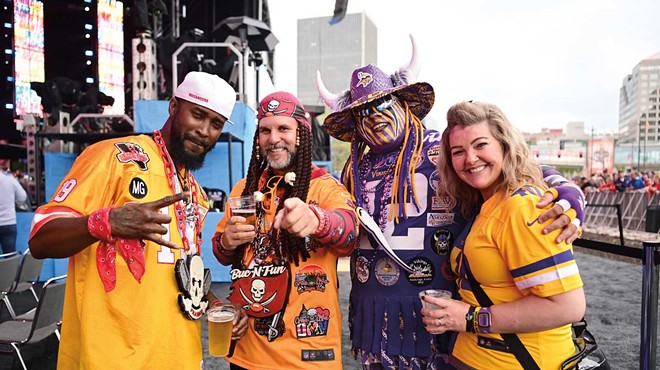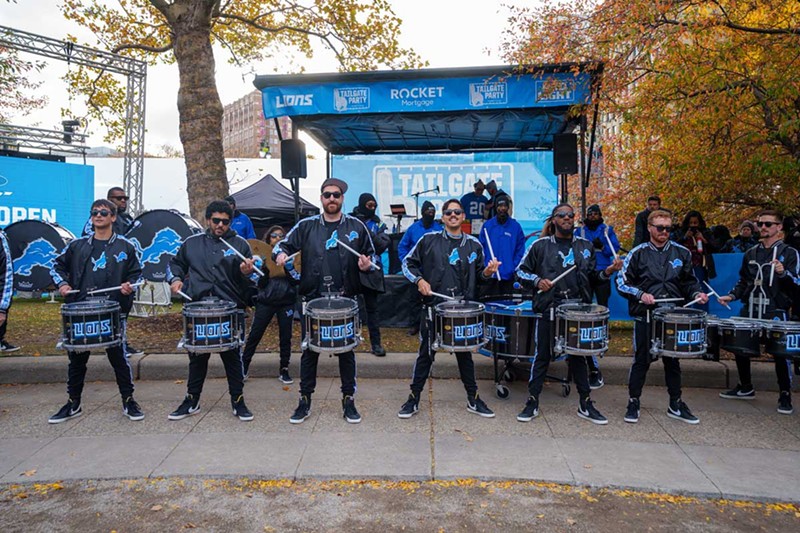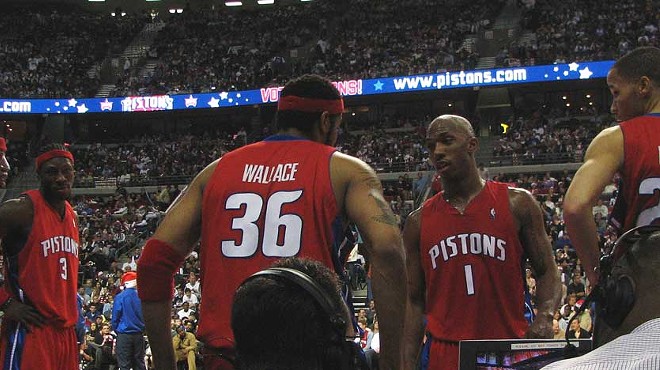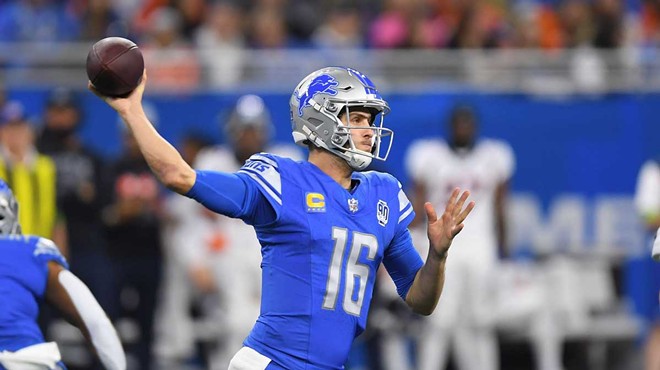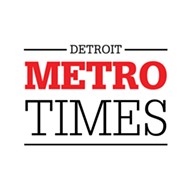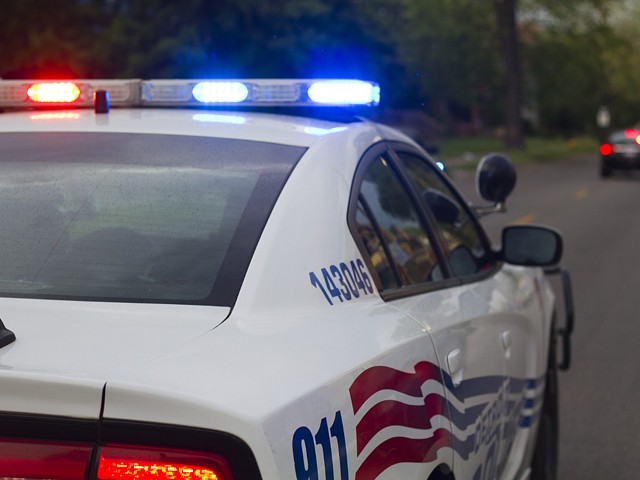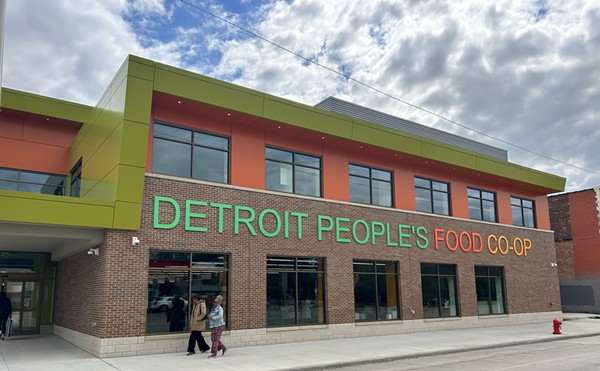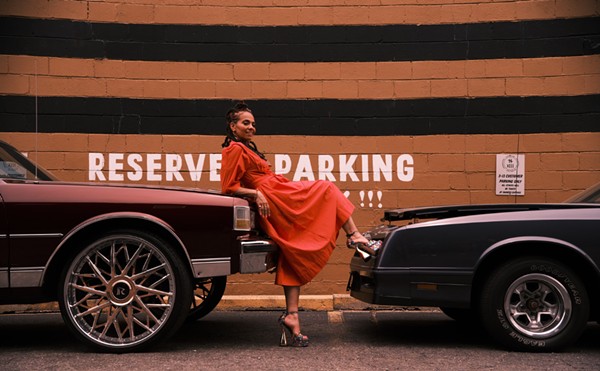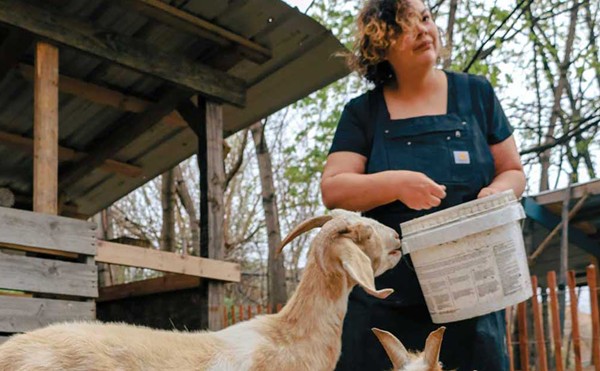Welcome back to Detroit, National Football League. Your 2024 draft festival marks the first time you’ve gathered en masse here in the Motor City since the Super Bowl of 2006.
So let’s re-introduce you to a peculiar American sports town with deep roots in the Big Four pro leagues. Over the decades, those seedlings gradually sprouted nationwide like branches on family trees over generations and geography.
You might have noticed last season when Detroit boosters declared the Lions to be “America’s Team” (for the moment) with an overall record of 14-6. Around here, our pro teams, our sports heroes, and our memories are monumental and all are revered.
Consider: Over the Detroit River, we are building a new bridge to Canada and naming it after a hockey player. Downtown, where most draft visitors will stay, our most distinctive civic monument is a four-ton clenched fist outside City Hall, honoring a boxer.
If you guessed their names to be Gordie Howe and Joe Louis, you passed the quiz. Along with baseball’s Ty Cobb, this trinity of local icons reflect Detroit’s longevity on America’s pro sports scene. The Tigers (1901), have been in the American League longer than the New York Yankees (1903).
Predating even the A.L., the Tigers are Detroit’s senior class, the varsity, established here about the time Henry Ford first started making horseless carriages. The junior class would be the Red Wings, established in 1927, members of the mythical “Original Six” of the National Hockey League.
They arrived during the American sports boom of the Roaring ’20s, when Detroit was flush with money, manufacturing jobs, and migrant factory workers, Black and white, moving here from the southern states for jobs. By 1950, Detroit had nearly 2 million citizens and many auto companies.
The classical home uniforms of these two teams — the blue, old English “D” of the Tigers on a white background; and the white, winged wheel of the Red Wings on red — are almost like vestments, the dignified formal wear of their respective sports, practically tuxedos.
The Lions — currently the toast of the town — are the sophomore class, arriving from Portsmouth, Ohio, in 1934. Last and clearly least at the moment is the freshman franchise, the Pistons, who moved here from Fort Wayne in 1957, a mere 67 National Basketball Association seasons ago.
They lost 28 straight games on the way to their final record of 14-68 this season. That is the worst in Pistons’ history, worse than the 16-66 of the 1979-80 season, when Dick Vitale was fired as coach and general manager and the games were played in the Lions’ Silverdome.
Both Vitale and the Pistons went on to better things. Detroiters realize that other regions have more big-league teams. New York, for instance, has nine franchises and Los Angeles has eight. And 10 other locales also enjoy the Big Four sports.
But only New York has had the same four franchises in the four sports (as a group, continuously) longer than Detroit. The generational loyalty that bonds Detroit teams and their followers goes back further than it does for four-team arrivistes like Phoenix or Seattle or even Dallas.
So the joy around here for the Lions mixed with melancholy memories because this region and these sports clubs have paid many dues in many ways.
When they won two, post-season victories and came within 30 minutes of a Super Bowl berth, the Lions’ triggered local glee by ending a Motor City sports recession that began shortly after the city itself went bankrupt in 2013.
Until the Lions last season, no Detroit team had prevailed in a postseason round since the Red Wings and the Tigers each won one round in 2013. The Pistons last won a round in 2008. The Wings this spring missed the playoffs for the eighth consecutive season but their fans celebrated them because they almost qualified.
During the last decade, some days have seen all four Detroit teams in last place in their respective divisions at the same time.
As for the historic Lions, they dominated much of the Eisenhower era, when some helmets lacked faceguards. Their most recent NFL title came in 1957, ten years before the first Super Bowl. That’s part of the reason Detroiters went so daffy last season.
Fans expressed pent-up desire to cheer up and chat about something positive in common. When people left home wearing team colors of Honolulu blue and silver, they sparked spontaneous, friendly conversations among strangers at gyms, in the stores, and after church.
It was something to share, like a solar eclipse. Perhaps we overdid it a bit, but this is not a glitzy coastal city full of showbiz celebrities and lots of money and major distractions. Sports here make up a large percentage of our civic self-image. And history gives it depth.
Last fall, casual conversations sometimes drifted to shared Lions’ memories of long-ago games watched with siblings, parents, and grandparents (some long gone) at Ford Field, the Silverdome, Tiger Stadium, Briggs Stadium, and maybe even the University of Detroit stadium.
In addition, a particular phenomenon became evident during Lions’ road games in places like Tampa, Carolina, Los Angeles, and Dallas: All those blue-clad people cheering for the visiting Lions. Other teams have fans at their road games, too, but the size of the Detroit diaspora is disproportionate.
Why?
In part, it’s evidence of Michigan’s economic decline over the last 40-plus years, ever since the domestic automobile industry staggered badly in the 1980s. Since then, many jobs have left the state and so have the workers. Since 1990, Michigan ranks 49th in population growth.
Plus, the 2008 recession further wounded the economics of an aging state and a mature industry. Unlike in the early 20th Century, Detroit is no longer a boom town; the migration in Michigan is outward.
The publication Bridge Michigan recently cited numbers from The Michigan Center for Data and Analytics — the state demographers — predicting that Michigan’s “deaths are projected to out-number births by 25,000 per year within a decade.”
In addition, the state population — now 10.1 million to rank 10th among the 50 states — could plummet by 700,000 in 20 years, it is forecast.
So it is likely that the blue shirts at road games were worn by Michigan migrants or their descendants. This became noticeable with Tigers’ road games of the 1980s, when the Tigers got good, followed by, first, the Pistons, then the Red Wings.
Because it is now pro football’s turn, it is more noticeable and we’re four decades down the road. As a native Detroiter from a big family, I have siblings and kids in California, Colorado, Texas, Oklahoma, Georgia, and New York (and Michigan).
This is not uncommon for natives of the Great Lakes State. So you touch base. What better way to reopen a dormant conversation than “How ‘bout those Lions? (Or Tigers, or Wings, or Pistons?)”
You can argue that such extended loyalty makes Detroit America’s best, hard-core sports town, bedrock terrain for four leagues, anchored in a different century.
When the Motor City and its burgeoning car industry went big-league, baseball had 16 teams, football 12, basketball eight, and hockey six. Now, the Big Four sports have 124 franchises. Think further in cold numbers as if pro sports leagues were, run, say, like the auto business.
If those leagues were scouting for expansion franchise sites right now, the metrics and demographics of metro Detroit would not point them this way. Older fans on fixed incomes or those of modest means may love their sports. But they buy very few season seats or luxury suites.
By getting in on the ground floor, Detroit got grandfathered in, at least for now. Maybe that is why Detroit fans are so grateful for what little they get. I’ve worked in New York and Chicago, too, and reported about sports from other places.
Few cities are as tolerant as Detroit fans and media, which may come as a surprise to sensitive Lions’ quarterback Jared Goff. They don’t mind when a “rebuilding” phase goes on for five years or for a decade. They don’t boo or heckle as much as they used to and still do in some towns.
Detroiters are less demanding and more humble than folks in other places because their loyalty has been beaten down and tested. Visitors might notice those shirts around town that proclaim “Detroit vs. Everybody.”
If that suggests we have chips on our shoulders, well, yes, and Detroit sports fans have good reasons for them.
In 1935-36, the Motor City was the “City of Champions” with the Tigers, the Lions, and the Wings all on top. Despite the revival of the Lions last season, recent overall achievement ranks Detroit one of the losingest sports markets on the continent.
A website called “Champs or Chumps” evaluated 52 North American sports markets by the success of their current teams. L.A. is first, followed by Tampa and Kansas City. Detroit comes in 31st but our fans would shrug and say “So?” in a way that will not knock the chips from their shoulders.
Fans here figure that if you keep buying tickets and watching the games on TV, eventually, your generation will get its just reward and enjoy a championship or two, from one or more of the four franchises, like the “City of Champions” teams of the mid-1930s or the 1984 Tigers or the “Bad Boys” Pistons or the “Hockeytown” Red Wings of the “Russian Five” era.
Now, it is the Lions’ turn to thrill and did they ever. They led San Francisco by 17 points with 30 minutes left in the NFC championship game and then they let an apparent Super Bowl appearance slip through their fingers like a greased pigskin, losing by 34-31.
In most cities, after such a collapse by the local team (Dallas, for instance), their fans would weep and gnash their teeth and point fingers in the blame game, and there was plenty of blame to share in Detroit. But there was little anger from Lions’ fans or media, even on talk radio.
It was more like stunned disbelief at a new generation’s new experiences — new highs, new lows — for the first time in a decade or more
The Lions just weren’t ready to win and maybe their fans weren’t either. After two or three days of mourning, the town returned to normal, the mood was one of gratitude and the upbeat buzz resumed.
Hey, how ‘bout those Lions? What about next year? Who should they draft, trade, cut or sign? Lo, the clouds have cleared and the future is bright. Even in a domed stadium, the skies above us are Honolulu blue.


